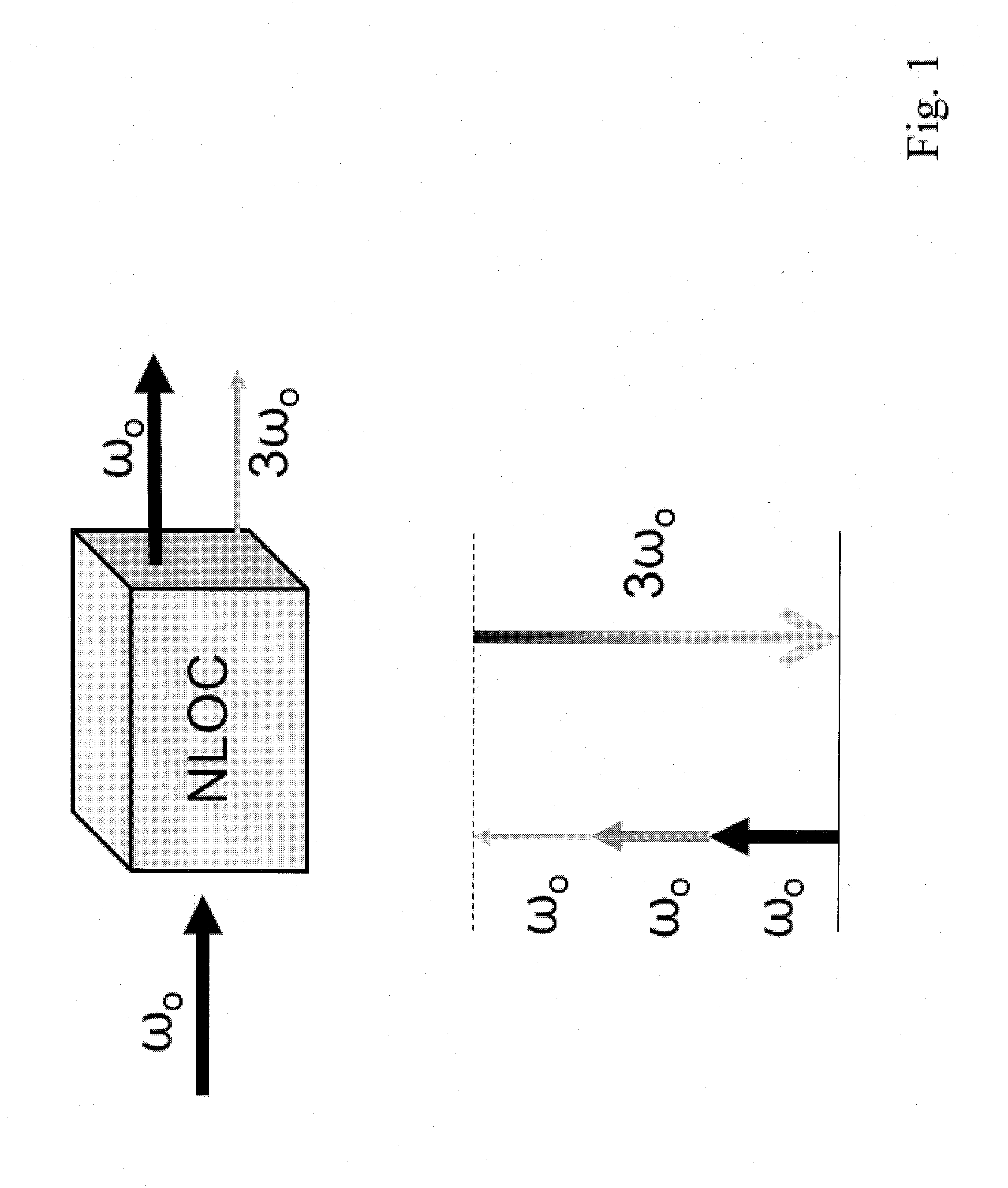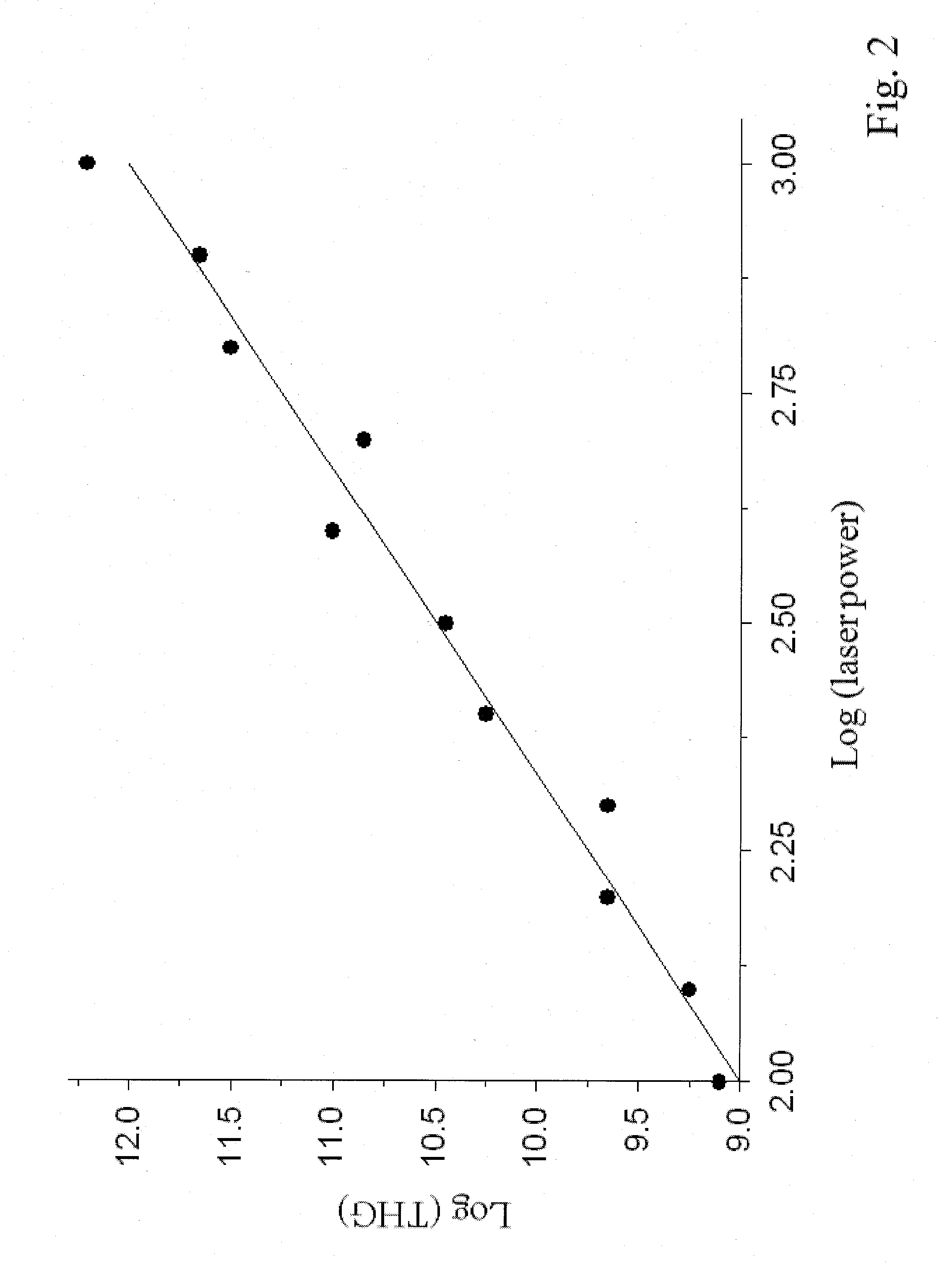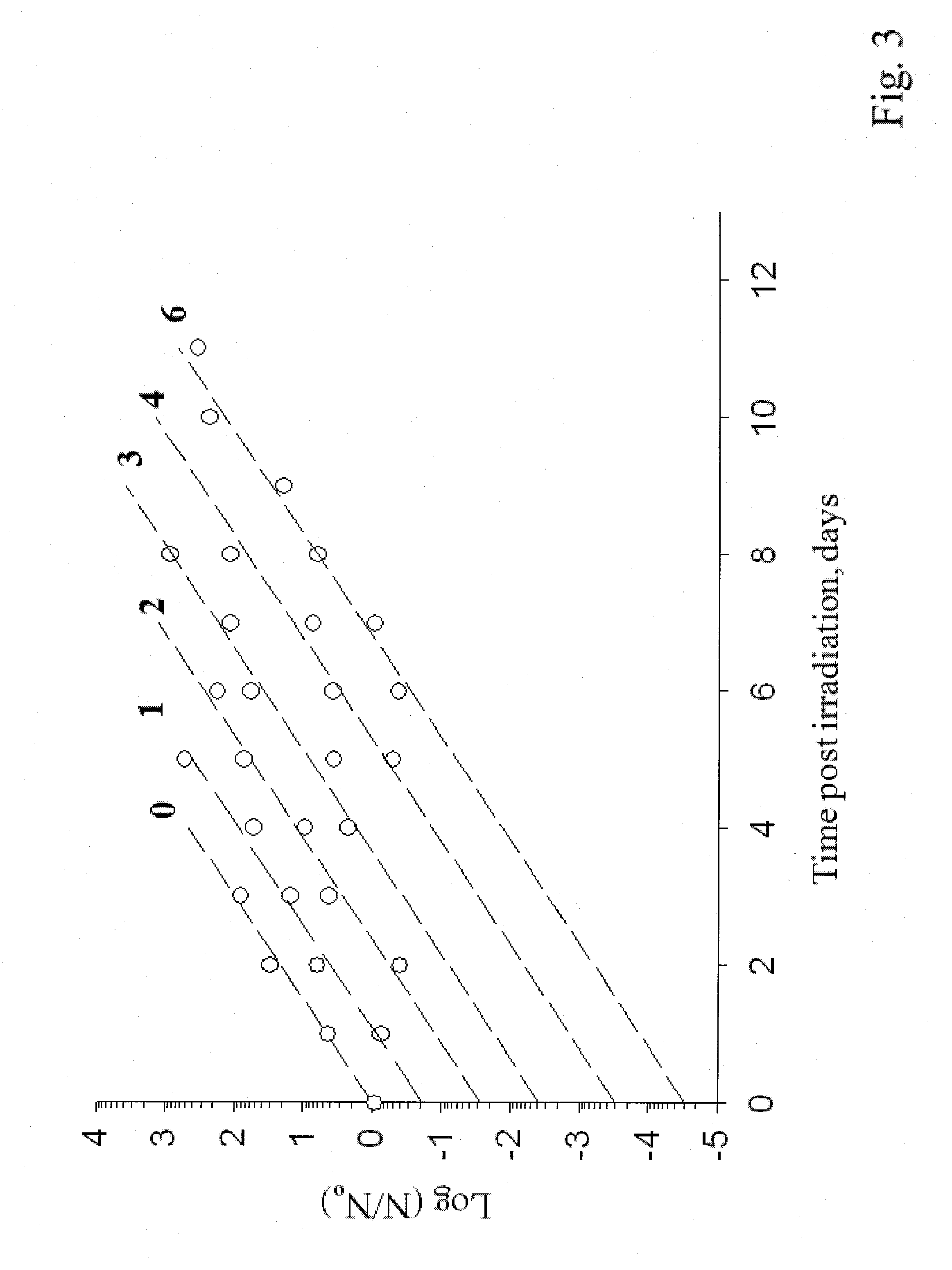Laser-based treatment for malaria
a technology of lasers and malaria, applied in the field of laser-based treatment for malaria, can solve the problems of difficult selection of important antigens for vaccine targeting, hampered human vaccine development, limited long-term efficacy of quinolines and antifolates, etc., and achieve the effect of effective germicidal treatmen
- Summary
- Abstract
- Description
- Claims
- Application Information
AI Technical Summary
Benefits of technology
Problems solved by technology
Method used
Image
Examples
example 1
Laser-Induced Reduction in Parasitaemia
[0024]In this example I demonstrate that irradiation of infected human erythrocytes, containing the malaria parasite, with pulsed NIR laser inactivates the parasites (15). Plasmodium falciparum HB-3 (ATTC 50113) from a frozen vial was placed in culture and maintained by the continuous flow technique (18). For experiments, cultures were initiated with a 10% suspension of a human A+ erythrocytes in RPMI 1640 medium containing 10% human A+ serum at a starting parasitaemia of 0.2% as described by Waki et al (19). Cultures were incubated in a cell culture incubator at 37 degrees Celsius with a gas mixture containing 5% CO2, 10% O2 and 85% N2. Triplicate cultures (0.5 ml) were prepared in 24-well flat-bottom tissue-culture plates and multiplication of parasites monitored daily using Giemsa-stained thin films made from each of the cultures. For determination of growth ˜10,000 erythrocytes were examined at 1000× magnification under oil.
[0025]Two method...
example 2
Bactericidal Effect of NIR Laser and Haemozoin
[0031]In this example I demonstrate that irradiation of synthetic haemozoin in the vicinity of live bacterial cells, kills the bacteria(15). The results of the experiment are consistent with my hypothesis of a laser-induced pathogenic effect of haemozoin via a third harmonic generation mechanism. Escherichia coli (E. coli, ATCC 11775) from an agar slant were inoculated into 6 ml nutrient broth (Becton Dickinson / Difco) and incubated at 37 degrees Celsius in a cell culture incubator. After 18 h incubation, cells (˜1˜108 CFU / ml) were diluted 106-fold into BHI (Becton Dickinson / Difco) broth and placed in a stirred quartz cuvette containing haemozoin or hemin for irradiation. Cuvettes containing 3 ml cell suspension were placed in a cell holder and irradiated with the laser for various time periods at room temperature. Following irradiated cell samples (0.1 ml) were spread onto agar plates containing 1.5 g / l bile salts (Becton Dickinson / Difco...
PUM
| Property | Measurement | Unit |
|---|---|---|
| Transparency | aaaaa | aaaaa |
Abstract
Description
Claims
Application Information
 Login to View More
Login to View More - R&D
- Intellectual Property
- Life Sciences
- Materials
- Tech Scout
- Unparalleled Data Quality
- Higher Quality Content
- 60% Fewer Hallucinations
Browse by: Latest US Patents, China's latest patents, Technical Efficacy Thesaurus, Application Domain, Technology Topic, Popular Technical Reports.
© 2025 PatSnap. All rights reserved.Legal|Privacy policy|Modern Slavery Act Transparency Statement|Sitemap|About US| Contact US: help@patsnap.com



